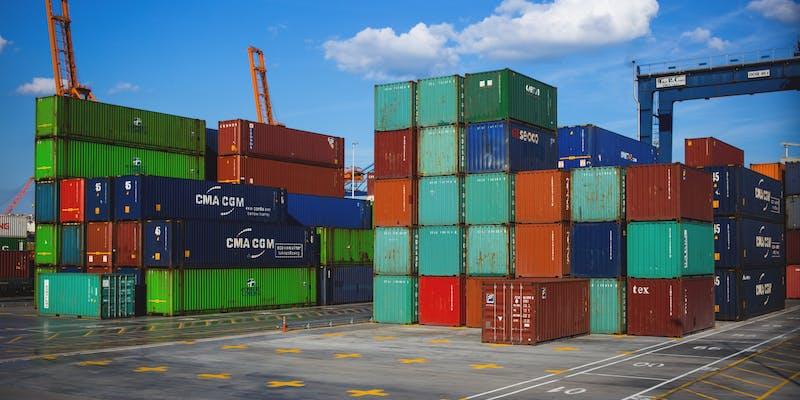Causes of Trade Deficits and Their Wider Economic Implications
Dec 08, 2023 By Susan Kelly
A trade deficit occurs when expenditure on imports exceeds receipt from exports. Consider a country that imports more than it exports. However, this is called a negative trade balance.
How Is It Calculated?
We can look at different areas to determine a country's trade balance. These include transactions in goods (also known as merchandise), services, or a combination of both. Additionally, we consider broader international transactions, which are categorized into three accounts: the current, capital, and financial accounts.
Breaking Down the Accounts
- The current account covers trade in goods and services, plus income payments like dividends from investments or money sent to family abroad.
- The capital account deals with asset transactions, such as disaster insurance payments or trading rights like patents.
- The financial account tracks investments in financial assets, distinguishing itself from the other two accounts, focusing more on physical goods or income flows.
Why Do Trade Deficits Happen?

Countries run into trade deficits for various reasons. Sometimes, they don't have the resources or skills to produce certain goods efficiently. Other times, they might prefer to import goods to focus on making what they're best at or to access cheaper or unavailable goods.
1. A Growing Economy
Interestingly, a growing economy may increase trade deficits. The reason is that individuals have more money to spend as the economy grows. They might start buying more products from abroad, which naturally increases imports. Plus, a strong economy attracts foreign investors, who bring in more money and potentially boost imports even further.
2. Government Spending Habits
The country might start saving less when a government ramps up its spending. This reduction in national savings can translate into a higher trade deficit, as the nation may need to rely more on imports.
3. Fluctuating Exchange Rates
The value of a country's currency plays a significant role. If the currency weakens compared to others, buying things from abroad gets more expensive. On the other hand, if the currency is strong, the country might be tempted to import more because it becomes cheaper.
4. Production Limitations
Some nations can't manufacture certain items or as inexpensively as others due to climatic, natural resource, or technology limits. Small islands may have to import agricultural items since they cannot cultivate them entirely.
5. Trade Policies and Tariffs
How open a country is to trade can also affect its trade deficit. Removing trade barriers like tariffs might not necessarily increase the overall trade deficit, but it can shift trade more toward specific countries. It's more about changing trade dynamics than directly increasing or decreasing the deficit.
How a Trade Deficit Can Impact a Country's Economy
A trade imbalance may hurt a nation's economy, not simply a number. Some possible effects:
1. Cheaper Products
It usually happens that a country has a trade deficit, and buying things from another country is cheaper than making these products itself. Low prices in different categories hence would be beneficial to clients.
2. The Currency Effect
A country’s currency value is subjected to trade deficits. For example, when the US purchases many European products, they pay in dollars. Then, European sellers may trade their dollars for euros, enhancing the demand for euros and possibly affecting the dollar’s value. Nonetheless, most countries keep their dollar as a reserve currency that could mitigate against this impact.
3. The Risk of Deflation
The sending of part of a country’s currency abroad occurs when such a country has a trade deficit. This might cause deflation due to declining economic demand and price decreases. In theory, it is sound, but deflation has negative implications for the economy's long-run growth.
4. Job Market Shifts
A trade deficit might mean more imports and fewer domestic products, which can shake up the job market. For example, if a country imports cars instead of making them, car manufacturing jobs might decline. While some economists argue that the money saved from cheaper imports can be used in other areas, creating new jobs, others worry that those who lose their jobs in affected industries might not easily find new employment.
5. Impact on GDP
Economic health is measured by a country's GDP, which includes trade imbalances. GDP may drop if a country's trade imbalance rises, indicating economic problems.
Potential Benefits of Trade Deficits

While often viewed negatively, trade deficits can have some upsides:
Short-term Benefits
The most immediate advantage is that a trade deficit lets a country consume more than it produces. This can be especially helpful in the short term, preventing shortages and other economic hiccups.
Self-Correcting Nature in Some Economies
In specific scenarios, trade deficits can balance themselves out over time. A trade imbalance frequently lowers a country's currency. This depreciation makes imports pricier and domestic goods more appealing and affordable for consumers. It also means the country's exports become cheaper and more competitive internationally.
Attracting Foreign Investment
Trade deficits signify a robust and stable economy, especially in developed countries. This stability can attract foreign investors. Take the U.S., for example; its dollar is a significant reserve currency globally. Due to this ongoing need, foreign companies must trade with the U.S. to get dollars. The enormous amount of U.S. Treasuries owned by overseas investors shows this foreign investment.
Potential Long-term Downsides
While there are benefits, trade deficits are not without their challenges:
Risk of Economic 'Colonization'
One significant long-term concern is the risk of what could be described as economic 'colonization.' Continuous trade deficits by year mean foreign investors accumulate funds to buy assets in the deficit-running country. This could increase foreign ownership of businesses, natural resources, and other vital assets.
Fixed Exchange Rates
Trade deficits can be particularly problematic for countries with fixed exchange rates. In such regimes, adjusting the currency's value to balance trade is not an option, potentially leading to persistent deficits and rising unemployment.
Link to Budget Deficits
The twin deficits hypothesis suggests a connection between trade and budget deficits. Some economists point to the European debt crisis, where persistent trade deficits among some EU members with Germany played a part in the crisis. This issue becomes more acute in the Eurozone, where exchange rates are fixed.








